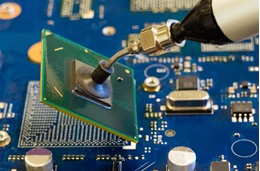
Your Sample Request
CircuitWorks Lead-Free Pocket Solder
*=required field
TDS
REGS
SDS
CircuitWorks Lead-Free Pocket Solder
Lead free, high purity pocket sized solder dispenser for convenient rework and repair
CircuitWorks® Lead-Free Pocket Solder is the high-purity pocket-sized solder in a convenient dispenser for rework and repair. This rosin core solder wire is manufactured from the lead-free solder alloy SAC 305. Lead-Free Pocket Solder is easy to use and produces reliable solder joints every time. Its activated pure rosin flux core eliminates troublesome solder voids. Instant wetting action provides thorough deoxidation of metallic surfaces providing the best possible surfaces for soldering.
Features & Benefits
- Precision manufactured Lead-Free solder alloy
- 96.5% Tin (Sn), 3.0% Silver (Ag), 0.5% Copper (CU)
- Type ROL0 flux per IPC J-STD-004
- Ensures even, reliable solder connections
- Cleans and wets heavily tarnished copper surfaces
- RoHS Compliant
Applications
- Portable SAC 305 alloy, especially for lead-free rework and repair
| TDS | |
| REGS | |
| SDS | |
| Categories |
| Specifications |
IPC J STD-004 ANSI/IPC J STD-001, IPC-7711 |
|---|---|
| Shelf Life | 5 yrs. |


